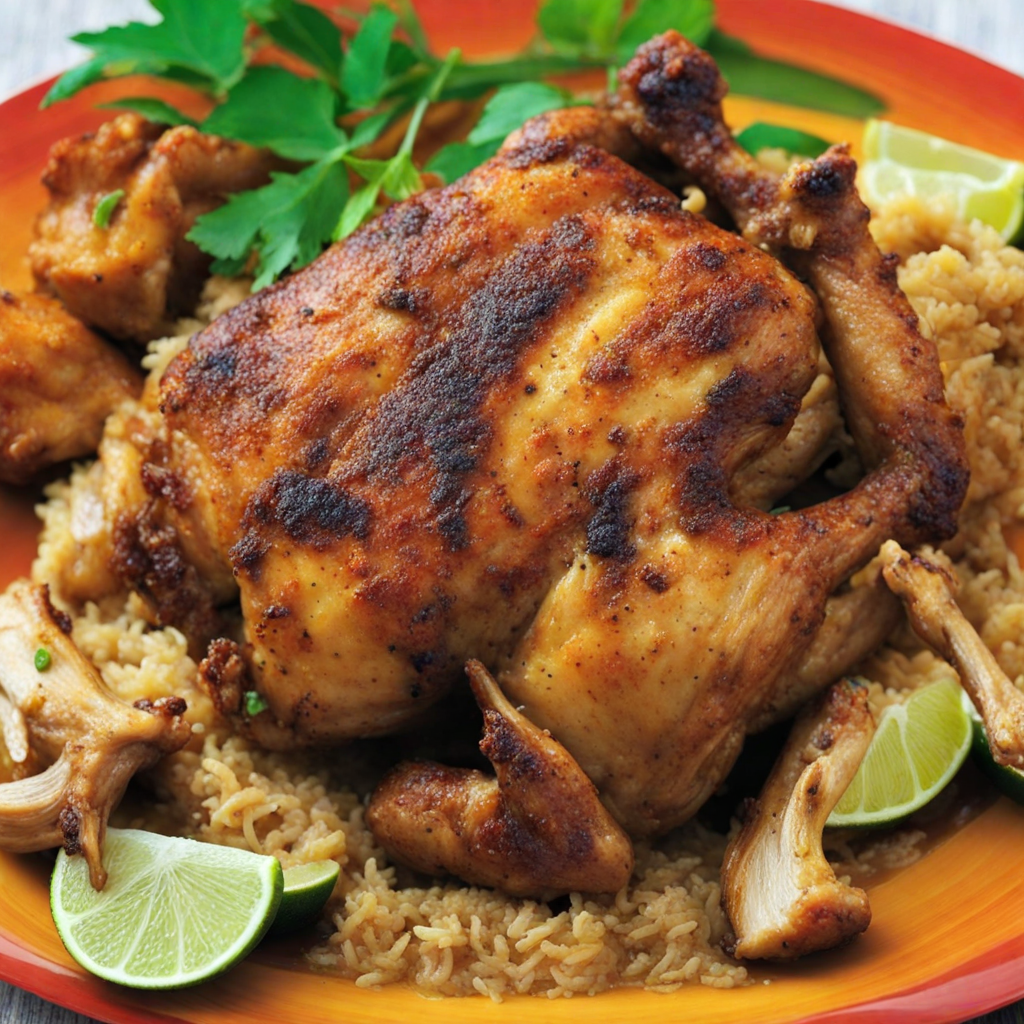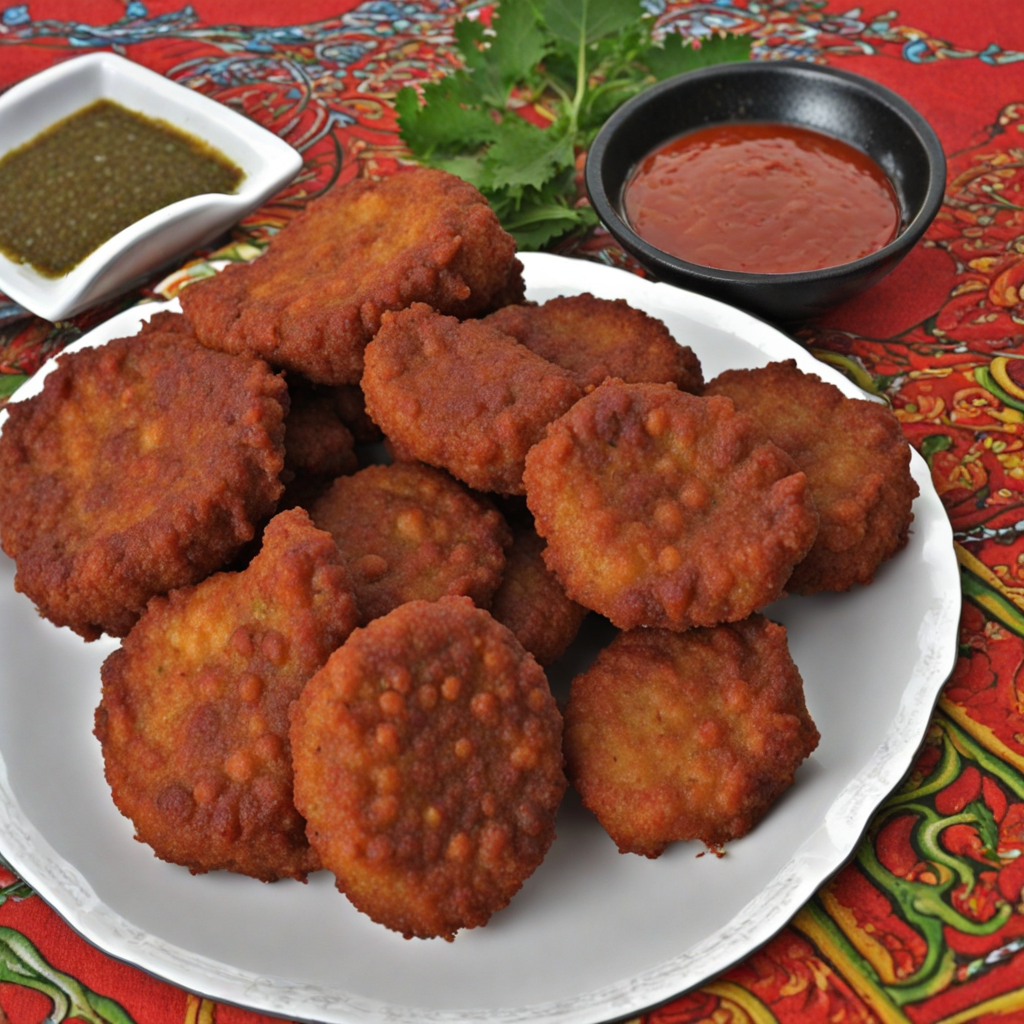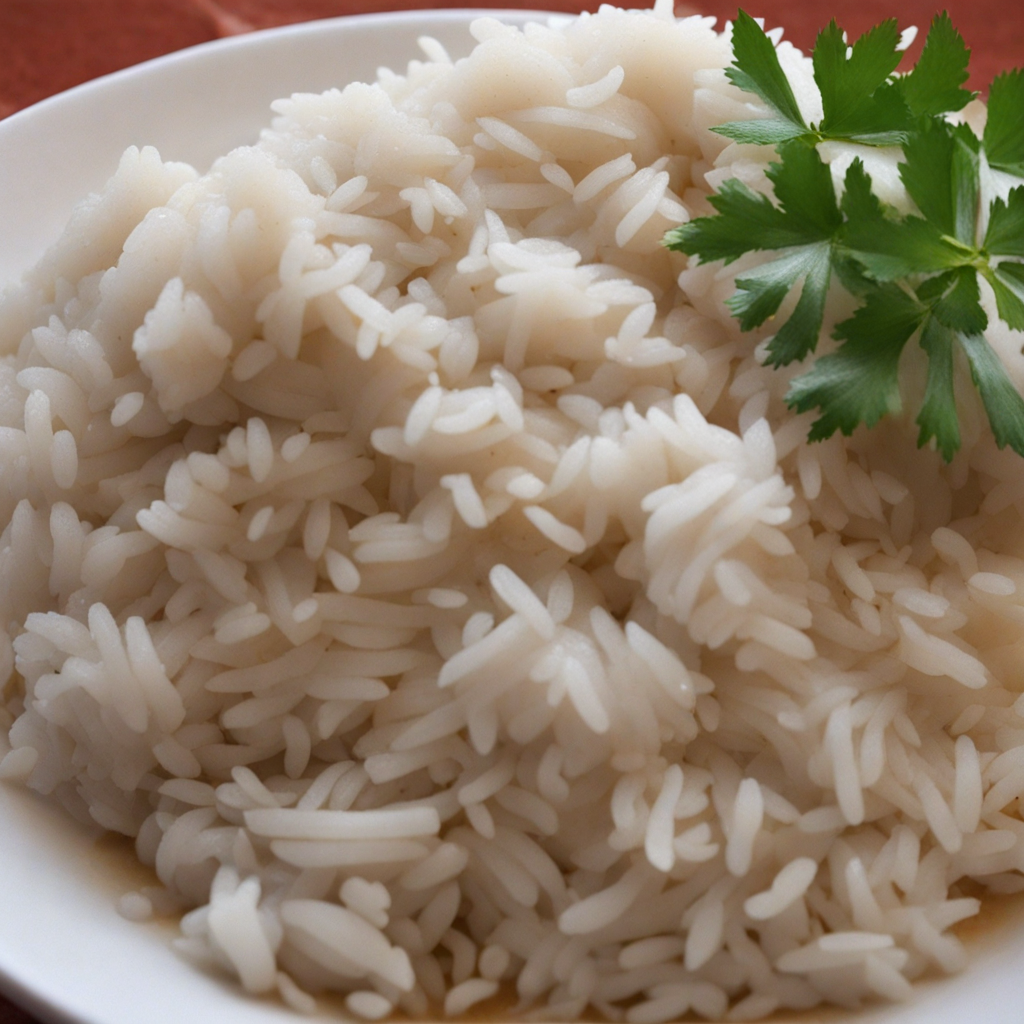Zambezia Chicken
Zambezia Chicken is a vibrant dish hailing from the coastal region of Mozambique, known for its rich culinary heritage influenced by African, Portuguese, and Indian flavors. The star of the dish is tender chicken, marinated in a tantalizing blend of spices that reflect the region's tropical climate and diverse culture. Ingredients such as garlic, ginger, and a medley of local spices are combined with citrusy elements like lime or lemon juice, which not only tenderizes the meat but also infuses it with a refreshing zest that dances on the palate. The marinated chicken is often grilled or roasted to achieve a smoky depth, giving it a beautiful caramelized exterior while keeping the inside succulent and juicy. Accompanying the chicken is a colorful array of sides that showcase the bounty of Mozambique's agriculture. Dishes such as matapa, made from cassava leaves simmered in coconut milk, provide a creamy and nutritious base. Additionally, a side of xima, a cornmeal porridge, offers a comforting and hearty component that balances the explosive flavors of the chicken. Fresh salads featuring local vegetables, as well as spicy peri-peri sauces, add layers of flavor and an extra kick, making each bite a delightful exploration of taste. The experience of Zambezia Chicken goes beyond just the food; it embodies the communal spirit of Mozambican culture. Often enjoyed during family gatherings or festive occasions, the dish is a celebration of sharing and togetherness. As you savor each mouthful, you're invited to embrace the vibrant colors, bold flavors, and the warmth of Mozambican hospitality, making Zambezia Chicken not just a meal, but a journey into the heart of Mozambique's culinary landscape.
How It Became This Dish
Frango à Zambeziana: A Culinary Journey Through Mozambique Frango à Zambeziana, often celebrated as one of the quintessential dishes of Mozambique, is not merely a culinary delight but a reflection of the rich tapestry of the nation’s history and cultural identity. This dish, which translates to "Zambezi-style chicken," showcases the fusion of indigenous flavors, Portuguese influence, and the vibrant traditions of the Mozambican people. Origins and Historical Context The origins of Frango à Zambeziana can be traced back to the region around the Zambezi River, which flows through several countries in Southern Africa, including Mozambique. This area is significant not only for its natural beauty and biodiversity but also for its historical role in trade and cultural exchange. The Zambezi River has long been a vital artery for commerce, facilitating the movement of goods, people, and ideas. Mozambique’s culinary landscape is heavily influenced by its colonial past. The Portuguese arrived in Mozambique in the late 15th century, establishing trade routes and settlements that would profoundly impact local cuisine. The Portuguese brought with them an array of ingredients, cooking techniques, and flavors, which melded with the indigenous culinary traditions of the region. This fusion is particularly evident in Frango à Zambeziana, where traditional African ingredients and flavors meet Portuguese influences. Cultural Significance Frango à Zambeziana is more than just a dish; it is a symbol of community and celebration. In Mozambique, food plays an integral role in social gatherings, family celebrations, and religious rituals. Chicken, being a relatively accessible protein, is often featured in communal meals, making it a staple for both everyday dining and special occasions. The preparation of Frango à Zambeziana typically involves marinating chicken in a mixture of ingredients that reflect local flavors, including garlic, chili peppers, lemon or lime, and a variety of spices. The dish is then often cooked over an open flame or grilled, imparting a smoky flavor that enhances its appeal. This cooking method not only highlights the importance of fire in traditional African cooking but also fosters a sense of togetherness, as families and friends gather around the grill to share in the experience. In many Mozambican households, preparing Frango à Zambeziana can be a communal effort, with family members contributing to the marinating, cooking, and serving of the dish. This collaborative approach to cooking reinforces social bonds and reflects the communal values that are deeply embedded in Mozambican culture. Development Over Time Over the years, Frango à Zambeziana has evolved, adapting to changing tastes and the availability of ingredients. The dish has its roots firmly planted in traditional Mozambican cooking, yet it has also embraced modern culinary trends. With the rise of tourism in Mozambique, particularly in coastal regions like Maputo and Tofo, Frango à Zambeziana has gained popularity beyond its regional origins, becoming a must-try dish for visitors eager to experience the flavors of the country. Moreover, the globalization of food culture has led to the introduction of new techniques and presentation styles. Contemporary chefs in Mozambique often experiment with Frango à Zambeziana, incorporating elements from international cuisine while still honoring its traditional roots. This has resulted in diverse interpretations of the dish, allowing it to remain relevant and appealing to both locals and tourists. One notable aspect of Frango à Zambeziana is its versatility. While the classic version remains beloved, chefs and home cooks alike have begun to put their own spin on the dish. Some variations include the use of different types of poultry or even vegetarian substitutes, reflecting the dietary preferences of a more health-conscious generation. Additionally, the side dishes served with Frango à Zambeziana can vary widely, ranging from the ubiquitous rice and beans to more innovative accompaniments that showcase seasonal produce. Ingredients and Preparation At its core, Frango à Zambeziana is a celebration of bold flavors. The key ingredients typically include: - Chicken: The primary protein, often marinated whole or in pieces. - Garlic: A staple in Mozambican cooking, providing depth and aroma. - Chili Peppers: For heat, reflecting the local love for spicy food. - Citrus: Lemon or lime juice adds acidity and brightness to the marinade. - Spices: Paprika, cumin, and black pepper are common choices, enhancing the flavor profile. To prepare Frango à Zambeziana, the chicken is marinated in a mixture of these ingredients for several hours, allowing the flavors to penetrate the meat. The marinated chicken is then grilled or roasted, often over an open flame, which imparts a distinct smoky flavor. The dish is typically served with a side of rice, salad, or a traditional Mozambican accompaniment known as "matapa," which is made from cassava leaves cooked with peanuts. Conclusion Frango à Zambeziana is a dish that encapsulates the heart and soul of Mozambique. Its origins are steeped in the country’s complex history, and its preparation is a reflection of community and cultural identity. As Mozambique continues to evolve, so too does its culinary landscape, with Frango à Zambeziana standing as a testament to the enduring power of food as a means of connection, celebration, and cultural expression. Today, whether enjoyed at a bustling market stall, a beachside restaurant, or a family gathering, Frango à Zambeziana remains a beloved dish that invites all who partake in it to experience the vibrant flavors and rich heritage of Mozambique. It is a culinary journey that not only satisfies the palate but also tells a story, bridging the past with the present and the local with the global.
You may like
Discover local flavors from Mozambique







